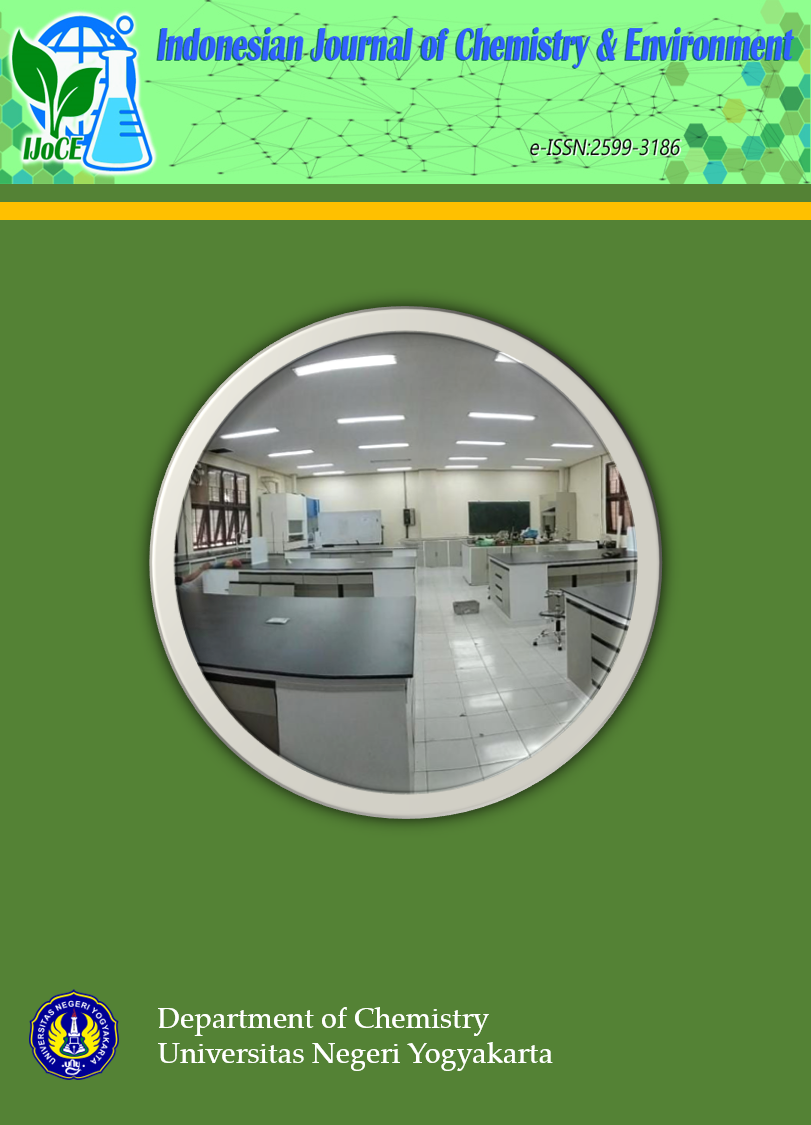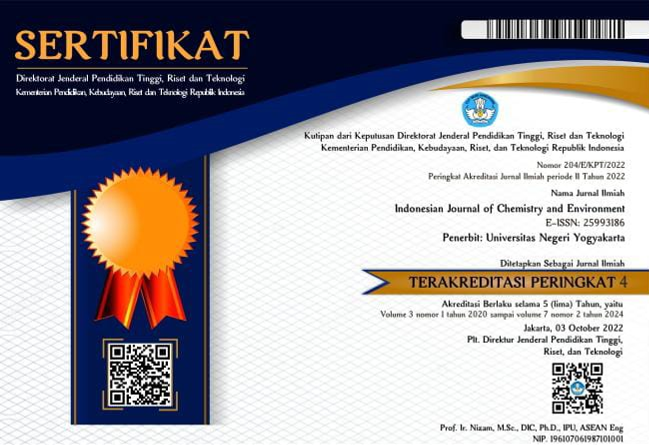The Decreasing of Copper (Cu) and Lead (Pb) Concentration in Electroplationg Liquid Waste with Coconut Coir Adsorbent
DOI:
https://doi.org/10.21831/ijce.v3i2.43507Abstract
The study about determining the characteristics, optimize of mass and adsorption efficiency of Cu and Pb metal ions in electroplating waste on each coconut coir adsorbent have been done as an alternative to commercial activated charcoal. The adsorption process is carried out by the batch method. Analysis of metal content was carried out using AAS instrument and SEM-EDX to determine the morphology and components of coconut coir adsorbent. The results of the characteristics of the coconut coir adsorbent meet SNI 06-3730-1995 for volatile substances and carbon subtances, meanwhile the commercial activated charcoal have not meet SNI 06-3730-1995 for the content of volatile substances, ash content, carbon subtances and absorption capacity of I2 . The characteristics with the morphology of the surface of the coconut coir adsorbent before and after adsorption has less uniform particle size and has a round pore with a large cavity like a honeycomb. The optimize mass of coconut coir adsorbent for adsorption of Cu and Pb metal ions is 0.9 grams. The efficiency and capacity adsorption of Cu and Pb metal ions using coconut coir adsorbent on 50 mL electroplating waste were 8.39% and 34.38%, respectively also has 11 mg/g and 0.026667 mg/g. The surface component of coconut coir adsorbent before adsorption contain Pb metal had a mass% of 0.4%, while after adsorption there was a metal content of Cu which had a mass% of 0.9% and Pb metal had a mass% of 4.5%.
Downloads
Published
2021-08-30
How to Cite
[1]
Safitri, S.T. and Kristianingrum, S. 2021. The Decreasing of Copper (Cu) and Lead (Pb) Concentration in Electroplationg Liquid Waste with Coconut Coir Adsorbent. Indonesian Journal of Chemistry and Environment. 3, 2 (Aug. 2021), 1–10. DOI:https://doi.org/10.21831/ijce.v3i2.43507.
Issue
Section
Articles
Citation Check
License
Authors who publish with this journal agree to the following terms:
- Authors retain copyright under a Creative Commons Attribution–ShareAlike License (CC BY SA) that allows others to share: copy, and redistribute the material in any medium or format, Adapt: remix, transform, and build upon the material, for any purpose, even commercially.
- Authors are able to enter into separate, additional contractual arrangements for the non-exclusive distribution of the journal's published version of the work (e.g., post it to an institutional repository or publish it in a book), with an acknowledgement of its initial publication in this journal.
- Authors are permitted and encouraged to post their work online (e.g., in institutional repositories or on their website) prior to and during the submission process, as it can lead to productive exchanges, as well as earlier and greater citation of published work.










